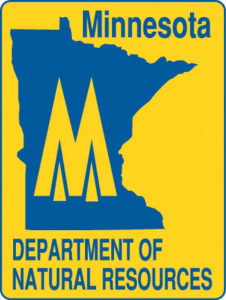DNR, others responding to changing conditions
With the latest drought map showing 11.1 percent of Minnesota in the severe drought classification, the Minnesota Department of Natural Resources is taking additional preparation and response steps, including:
The DNR is notifying (such as municipalities, irrigators, golf courses and other high water use businesses) with DNR permits that they should anticipate some amount of drought and manage their operations accordingly. Water appropriation permit holders can contact the local DNR area hydrologist for technical assistance or with any questions.
The DNR will notify public water suppliers in areas classified as being in severe drought that it is time to implement their water-use reduction actions. Residents and landowners should check with their municipal or public water supplier for details on local water-use reduction actions and restrictions.
The DNR will notify members of the State Drought Task Force, a panel of state, federal, regional and local experts with water-related responsibilities, about current drought conditions. The DNR may convene the Task Force if drought conditions worsen. The DNR last convened the Task Force in 2012.
The DNR will temporarily suspend some surface water appropriation permits in response to low stream flow conditions as necessary. The DNR has suspended 19 surface water appropriation permits in the Crow Wing and Redeye watersheds.
Times of drought bring a reminder of the importance of water. Minnesotans are encouraged to learn how much water they are using, compare that to others and identify ways to reduce water use now and in the future. More than 75 percent of Minnesotans rely on groundwater for the water supply. Reducing use today saves water for the future.
Drought is considered by climatologists to be a naturally occurring feature of Minnesota’s climate. Some level of moderate and severe drought typically occurs in the state almost every year for at least a few weeks. Most severe drought in Minnesota is short-lived, but drought in Minnesota can occasionally enter the extreme intensity classification.
The DNR and partner agencies have extensive water monitoring networks that inform both state and national reports and resources. The DNR submits data gathered by professional and volunteer water monitors across the state to inform the national drought map, updated each Thursday by the National Drought Mitigation Center, the U.S. Department of Agriculture and the National Oceanic and Atmospheric Administration. Minnesota has one of the most extensive volunteer water monitoring networks in the nation.
Drought is categorized by a set of drought intensity classifications:
D0 – Abnormally dry (not drought). Soil moisture is low, fire danger increases. All of Minnesota is at least abnormally dry.
D1 – Moderate drought. River and lake levels lower than normal. 82.1 percent of Minnesota is in moderate drought, up from 74.8 percent last week.
D2 – Severe drought. Ground is hard, fire danger is high, river flows are low, well levels decrease. 11.1 percent of Minnesota is in severe drought, down from 13.8 percent last week.
D3 – Extreme drought. Emergency haying and grazing are authorized, wildfires are widespread, surface waters are near record lows. None of Minnesota is in extreme drought.
D4 – Exceptional drought. Impacts of exceptional drought are very damaging. Minnesota has not experienced exceptional drought over the past 20 years. The drought of the 1930s would have been classified as an exceptional drought.
More information about drought is available on the DNR website. The website includes a link where anyone can sign up to receive drought-related notifications and information.

